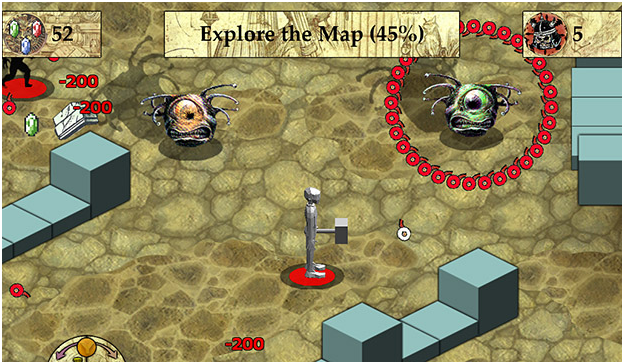You may have an idea or a concept for a game and you may like to make a full game based on that concept. Congratulations, you’re now taking the first step in the game development process. But you may be unsure of what to do next with your game concept. Fortunately, that’s what we’re here to discuss this.
How to find inspiration for a game idea
A game idea or concept can come from a variety of places. You may be inspired by another medium, such as a film or a book, you may have had an exciting experience and want to share it with others, you may be playing another game and think you can do better, or you may just have a sudden flash of inspiration out of nowhere. Because ideas can come from a variety of sources, they can take on a number of different forms and robustness. So it’s important to take a step back and have another look at this idea of yours.

How to create a game prototype
What should you do after your game concept has been fleshed out? Well, the next step is to create a simple prototype based on your game concept to see if it is viable and actually fun to play.
Wait, what if this is your first foray into game development and you barely have any programming skill? Well, fortunately, developing a game prototype is a good entry to the world of programming. There are many game development tools out there like GameMaker, Stencyl, and Construct 2 that can help you quickly create a prototype without having to write too many lines of code. These tools are so useful that even seasoned programmers use them to quickly build a prototype.
Should I use a game engine to prototype?
Should you use full-featured, professional game engines for making a prototype? Well, it’s completely up to you, but one of the purposes of making a prototype is to be able to test out your ideas easily, so when the idea doesn’t work out, you can tweak it quickly. With a full-featured game engine, even though it’s powerful, it may take longer to complete simple tasks, and you end up not being able to iterate on your game quick enough.
That’s also why most game prototypes are made with just simple shapes or very simple graphics. Creating those kinds of graphics doesn’t take a lot of time and allows you to iterate on your game concept quickly. Imagine you’re testing out a game concept and found out that enemies that just randomly hop around aren’t fun, so you decide to make those enemies simply run on the ground. If you’re just using a red square for your hopping enemies, you can use the same square for running enemies. But if you’re using, say, frog images for those enemies, you will have to switch to a different image when you want the enemies to run.

Why is prototyping so important in game development?
You may wonder why the emphasis is on creating a prototype instead of building the actual game. After all, isn’t fleshing out a game concept supposed to make sure the game is fun to play? Well, unfortunately, what seems fun in theory may not be actually fun in practice. Maybe you thought that having a jump stamina would make things more exciting for a player, but after prototyping such a system, you may discover that it actually slow things down and makes the game less fun.
Also, prototyping is not just useful for measuring a game’s fun, it’s also useful for making sure the player has the kinds of experiences that the game concept wants to deliver. Maybe you have this idea of a game where the hero fights many enemies at once so the player can experience an epic battle. But after you prototyped it, you found out that the game felt chaotic instead of epic. Fortunately with a prototype you can quickly tweak the variables of your enemies to make the game feel more epic and less chaotic.
Using simple graphics
Using simple graphics is important for a game prototype. If players can have a good experience with a prototype that uses simple graphics, imagine the fun they’ll have with the final graphics. Simple graphics are good because the experience the player feels is due to the game’s functions, and not because of how the game looks.
Next steps
After you’re done building the prototype and have proven that your game concept is fun to play, you can move on to the next step in the game development process. Your next step depends on the sort of game you want to make. If it’s a massive game with many systems, you might want to create a proper game design document that includes how you want to expand the mechanics of your game. But if the game is on the small side with simple mechanics, you can start building the final product and assets.
Good luck on your game development journey!
Raka Mahesa is a game developer at Chocoarts (http://chocoarts.com/), who is interested in digital technology in general. Outside of work hours, he likes to work on his own projects, with Corridoom VR being his latest released game. Raka also regularly tweets as @legacy99.










![How to create sales analysis app in Qlik Sense using DAR method [Tutorial] Financial and Technical Data Analysis Graph Showing Search Findings](https://hub.packtpub.com/wp-content/uploads/2018/08/iStock-877278574-218x150.jpg)